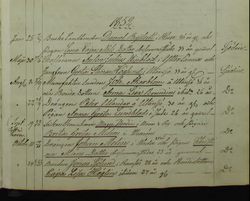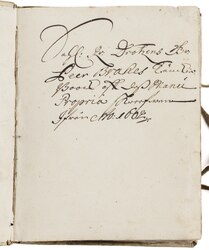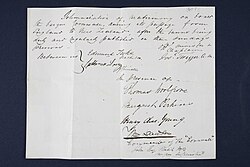
Swedish genealogy involves researching ancestors in Sweden, a Scandinavian country located in Northern Europe with a rich history and a well-preserved collection of historical records that make it a treasure trove for genealogical research. The country's meticulous record-keeping practices, particularly the use of household examination books and vital records, provide valuable insights into Swedish ancestry and family history. These have made the Swedes one of the best documented countries for genealogy purposes, as Swedish ancestry can sometimes be traced back up to 1,000 years.[1]
Swedish geography and historical context
Sweden, with its capital city Stockholm, is known for its breathtaking landscapes, cultural heritage, and contributions to science, literature, and technology. Historically, the country experienced various political and territorial changes, which impacted the administrative divisions and jurisdictional structures relevant to genealogical research.
The implementation of the Swedish parish system in the late 1600s played a pivotal role in record-keeping and genealogy. Each parish was responsible for maintaining detailed records of births, marriages, deaths, and other important events within its jurisdiction. These records, along with the household examination books, form the backbone of Swedish genealogical research.
Understanding Swedish names and handwriting

One of the key challenges in Swedish genealogy is deciphering names and handwriting in historical records. Swedish naming traditions follow a patronymic system, where individuals carry their father's first name as their surname, with the addition of the suffix "-son" (for sons) or "-dotter" (for daughters). This naming convention allows for tracing family connections and lineage; however, during the 1800s, Sweden experienced a period of surname adoption and standardization. This led to the introduction of permanent surnames based on occupation, place names, or other factors. Consequently, individuals might have changed their surnames multiple times, making it crucial to track these changes to accurately trace family histories.
Handwriting styles and variations in the Swedish alphabet further complicate the process of reading historical records. Historically, the Swedish alphabet included three additional letters, "å," "ä," and "ö," which are considered distinct from the standard "a," "a," and "o" in English. The handwriting in Swedish records can also pose challenges. Familiarizing oneself with the different letter formations and understanding common abbreviations and symbols used in the records is essential for successful genealogical research. Fortunately, resources and guides are available to aid researchers in deciphering Swedish handwriting.
Sweden Household Examination Books
The household examination books, also known as husförhörslängder, are a fundamental resource for Swedish genealogy. These records were meticulously maintained by the Lutheran ministers and provide a comprehensive snapshot of households within a parish. The books typically include details such as names, birthdates, marriage dates, moves, deaths, and relationships within the household.
Researchers can trace an individual's life journey, including changes in residence, marriages, births, and deaths, by following their entries in the household examination books. These records provide invaluable insights into family structures, societal dynamics, and migration patterns within Sweden. While household examination books offer a wealth of information, they also present certain complexities that require careful analysis. Some of these complexities can be observed through specific examples from the records; for instance, annotations such as strikethroughs or lines crossing out names often indicate significant events such as a person's death or a family's relocation. By examining these annotations and related entries, researchers can uncover important details about individuals and their relationships.
Additionally, the household examination books provide glimpses into familial tragedies and life events. For instance, the records may reveal the death of a spouse and subsequent marriages, shedding light on the complexities and challenges individuals faced in their lives. A huge collection of more than 150 million Swedish examination books can be found on MyHeritage.
Utilizing the household examination books to locate vital records
The household examination books serve as invaluable indexes for locating vital records related to births, marriages, and deaths. Researchers can access these records through the National Archives of Sweden, which offers free access to its digital archive.
Within the archive, the vital records are categorized under different subjects such as births and baptisms, banns and marriages, and deaths and burials. Researchers can navigate through the county and parish indexes to locate the specific records they seek. By cross-referencing the information obtained from the household examination books, researchers can pinpoint the exact dates and details of vital events. These vital records provide primary and original sources for documenting an individual's birth, marriage, or death in Sweden.
Marriages and banns in Swedish records

Marriages in Sweden were typically announced through banns, a public proclamation of the intended union. Banns were announced in the congregations of both the bride and groom for three consecutive Sundays before the marriage. This practice allowed the local community to raise objections or provide relevant information.
Swedish marriage records often feature a distinctive format, with banns listed on the left side and marriages on the right side. Researchers need to carefully navigate these records, considering potential discrepancies between banns and corresponding marriages, which may appear on different pages. The information contained in marriage records includes the names of the couple, their birth dates, and often their places of origin. These details, combined with information from the household examination books, allow researchers to gain a comprehensive understanding of the marital history of their Swedish ancestors.
Cemetery records in Sweden
In Sweden, there are comprehensive cemetery records available for genealogical research. Genealogical societies, such as the Federation of Swedish Genealogical Societies, have undertaken active projects to create extensive cemetery databases. These databases contain valuable information about burial sites, tombstone inscriptions, and cemetery records, aiding researchers in locating and documenting ancestral graves.
Researchers can access these cemetery databases online or through CD-ROM products that provide access to millions of records. These resources significantly enhance the ability to uncover details about ancestors' final resting places and contribute to a comprehensive understanding of family history in Sweden.
Research Swedish records on MyHeritage
Explore more about Swedish genealogy
- Historical records from Sweden on MyHeritage
- Sweden Household Examination Books record collection on MyHeritage
- Swedish Records Available on MyHeritage- a webinar by Daniel Horowitz on the MyHeritage Knowledge Base
- I Found My Swedish Grandfather’s Identity and Reunited with a Long-Lost Aunt Thanks to MyHeritage on the MyHeritage Blog
- Swedish Surnames: A Guide to Understanding the Origins of Your Swedish Roots on the MyHeritage Blog
- National Archives of Sweden
- Federation of Swedish Genealogical Societies
- The Swedish Genealogy Guide
- Swedish Finn Historical Society
- ArkivDigital
References
This article was adapted from Sweden Research with MyHeritage Records and Beyond, a webinar presented by Mike Mansfield on September 27, 2022. Watch the full webinar on Legacy Family Tree Webinars.
- ↑ Roots of Swedish Genealogy. Swedish Finn Historical Society